Preventing fires is everyone’s job. We all need to be alert to anything that could cause a fire, and take responsibility to report problems so they can be corrected.
Fire prevention involves reducing fuel for a fire, reducing or controlling ignition sources and keeping fuel and ignition sources apart.
Commonest causes of fire include:
- Electrical Fault - in a production environment temporary electrical systems are the most likely.
- Arson
- Cooking - in ���˿��� buildings cooking fires are unlikely but false alarms caused by smoke from toasters and similar equipment are very disruptive
- Stage effects.
Sources of fuel include:
- Paper, furnishings, plastics, electric cabling, wood and other building materials. In fact almost anything can be regarded as fuel except for brick/stone, glass and most metals.
- Flammable liquids including paints, fuel storage
- Pressurised gas cylinders for cooking, heating or cutting/welding.
Legal/���˿��� Requirements
- In England and wales fire safety legislation is centred on the Regulatory Reform (Fire Safety) Order. In Scotland it is the Fire (Scotland Act) and in Northern Ireland it is the Fire Safety Regulations (NI). But this is a complex area and you should seek advice if you need to understand how the legislation applies to what you are doing.
- In the UK ���˿��� have contracted the facilities management teams at each building to manage the fire safety arrangements.
- The ���˿��� has strict rules about where you can locate cooking equipment especially in live-broadcast buildings.
Emergency Preparedness
- Make sure you know who to call in an emergency
- Contact the National Central Control Room (NCCR) by dialling 666 on any internal phone. Their alternative direct dial number is available under Safety-related contacts: Emergencies in ���˿��� premises (via ���˿��� Gateway only). Save this to your mobile now!
- If your building has a local arrangement, or if you can’t contact the National Central Control Room (NCCR) then call 999 from a mobile.
- Participate in all emergency drills.
- Know where the escape routes are.
- Evacuate Safely: Do not panic, do not run or push but leave the area quickly in an emergency; use escape exit stairways do not use the lift (power outage will stop the lift). Assist your colleagues especially any with difficulties in evacuating.
- Report Fires and Emergencies promptly, don’t ignore smells of smoke, don’t assume someone else has reported it.
Emergency Action
- Proceed to the nearest call point.
- Activate the alarm by breaking the call point break glass.
- Evacuate the building.
- Only consider tackling the fire if you feel confident that you know which extinguisher medium to use, know how to use it, and are confident it will put the fire out.
General Fire Precautions
- Poor housekeeping contributes to fires by providing fuel and by preventing access to exits and emergency equipment. Keep workspaces free of waste paper and other combustibles. Keep storage tidy.
- Regularly check electrical leads for damage. Do not use any defective electrical equipment, quarantine it and report it.
- Make sure electrical equipment is PAT tested.
- Uncoil extension leads fully before use and do not ‘daisy chain’ leads (add extension leads into other extension leads to make them longer).
- Don’t cover any electrical equipment which gets warm in normal use – such as power supplies for laptops.
- Ensure heating equipment is safe to use
- Do not use equipment that gives off unusual heat or smells odd. If in doubt have it checked and repaired or replaced.
- Make sure all walk ways and corridors are kept clear to ensure emergency egress is uninhibited.
- 'Hot works' (e.g. welding, metal cutting, etc.) should not be undertaken without an appropriate permit / risk assessment
- Help maintain building security to prevent arson. Report anything suspicious; and don’t leave any combustible rubbish where it can be set on fire outside the building. If you spot rubbish which could be used to start a fire then call the facilities helpdesks.
Using Flammable Liquids
- Minimise the amount. Don’t use near any naked flame or very hot surface.
- Stored within a metal store/cabinet capable of containing leaks with the appropriate warning signage displayed.
- Make sure there is plenty of ventilation.
- Containers must be returned to the store at the end of the working day.
- Waste materials such as used cleaning rags should be kept in metal bins with close fitting metal lids and should be removed at the end of the working day.
- Keep in clearly marked containers, keep lids on containers.
- Don’t mix different liquids and don’t pour into unmarked containers.
- Ask for advice on what fire extinguishing appliances should be provided.
- Maintain good housekeeping, eg avoid build-up of rubbish, dust or grease that could start a fire or make one worse.
- Don’t bring petrol or diesel cans into ���˿��� buildings – vehicles in studios should have the absolute minimum amount of fuel in the tank.
Using gas cylinders
- Cylinders should be stored in the open air, out of direct sunlight and protected from rain in a locked ventilated cage.
- Never store flammable gas cylinders and oxygen together.
- Suitable warning notices should be displayed.
- The numbers of cylinders in the workplace should be kept to the minimum.
- Empty cylinders should be removed from the workplace as soon as possible.
- LPG should never be stored in areas below ground level.
- Acetylene should not be stored within buildings.
Facilities for staff to prepare their own hot food
- There is very little risk to people’s safety (from fire) using toasters, microwaves and similar equipment.
- But there have been many occasions when the preparation of food using microwaves and toasters has triggered the fire alarms. This has caused loss of programme output and causes disruption to everyone in the building.
For areas where live programme output may be affected:
- Microwaves, toasters and similar appliances must only to be used in designated catering areas (canteens, restaurants or kitchens), where there is adequate additional smoke extraction and fire protection to avoid unnecessary activation of the fire alarms leading to output interruption.
- Facilities for preparation of hot food should not be located in areas where live output may be affected by fire alarm activation. The business continuity assessment should be used to inform the decision as to which facilities are appropriate in any area.
- Hot drinks may be prepared outside of these formal catering areas. Wherever possible instant hot water or drinks dispensers will be provided rather than kettles
- Toasters, microwaves and similar cooking equipment must not be left unattended when in use.
- Exceptions may be made in order to meet legal requirements regarding provision of food and drink; where cooking is part of a programme; or, where adequate alternative fire detection, alarm and control systems are in place to prevent output interruption.
- All exceptions are to be subject to a thorough risk assessment carried out by the business manager responsible for the request and approved by ���˿��� Workplace and the relevant Business Continuity divisional leads for areas affected by the change.
- Where more than one division occupies the building and would be affected by any incident, agreement must be given by all Business Continuity Divisional Leads and output divisional directors who might be affected.
Recommended links
Fire topics
-
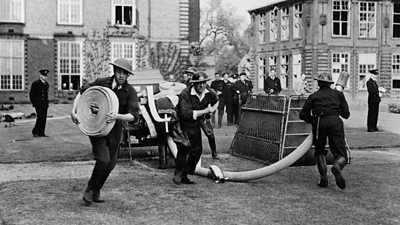
Building Fire Manual
Sets out the recommended contents of a building fire manual to be kept in each premises. -
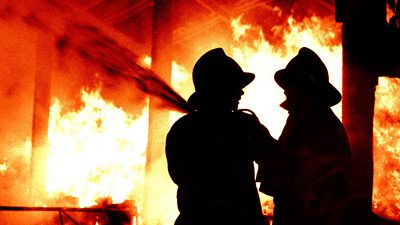
Fires - Buildings and Bushfires
A guide to deployments of journalists and crew to large building fires and bushfires. -

Fire Precautions for Studios
Guideline describing the main fire safety issues to consider when working in studios, including fire treating of sets, audience seating, cooking risks and smoking on set. -
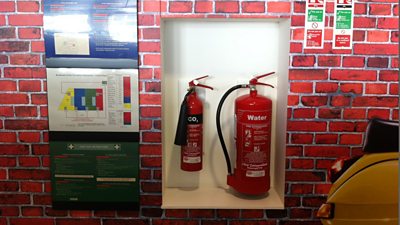
Fire Prevention Principles
The most important element of Fire Safety is fire prevention -
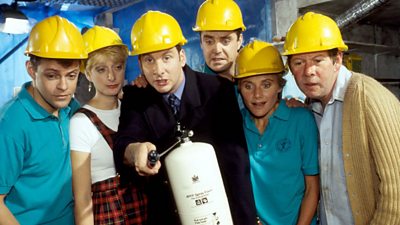
Fire Safety in ���˿��� Buildings
A summary of the way that fire safety is managed in ���˿��� Buildings and the individual’s role in the management of fire. -
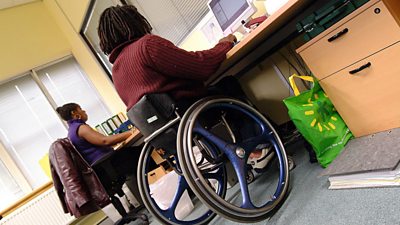
Personal Emergency Evacuation Plan (PEEP)
Guideline describing the measures to take to ensure those who need it can get assistance to evacuate a premises during a fire or other emergency.
More from SSR
-
Your platform to record accidents, risk assessments, assurance monitoring and inspections
-
Safety Equipment Stores
Just one number to call: 020 3614 5155 -
���˿��� Safety Guidelines
An A-Z of ���˿���'s Health and Safety Guidelines -
Safety Advice Line: 0370 411 0464 Email: safety@bbc.co.uk
- A-Z of ���˿��� Safety Guidelines
- Accident Reporting and Investigation
- ���˿��� Health & Safety Policy
- Contractors (incl. vetted lists)
- Contributors
- Fire Safety
- Freelancers
- Independent Production Companies
- Risk Assessment
- Safety Alerts
- Safety Responsibilities
- Safety Training
- Sets & Premises Safety Guide
Events guidance - key links:
- Exhibitions
- General Guidance
- Indoor Location Recce Checklist
- Outdoor Location Recce Checklist
- Major Incidents & Emergency Planning
- Marketing and Promotional
- Noise Exposure
- Planning and Management
- Responsibilities
- Responsibilities Form
- Laser Lighting Effects
- Strobe Lighting
- Temporary Stages and Rostra
Health topics - key links:
- (���˿��� network only)
- Contributors Fitness to Participate
- Display Screen Equipment (DSE)
- (���˿��� network only)
- First Aid and Welfare on Location
- International Travel - Risks & Health
- Manual Handling
- Mental Health: ���˿���page
- (���˿��� network only)
- Personal Health and Wellbeing
- Pregnancy
- Psychological Trauma Support & Trauma Risk Management (TRiM)
- Tiredness and Fatigue
- Travel Health Contacts
���˿��� High Risk - key links:
- CBRN and Industrial Spills
- Covert Filming
- Crisis Management and Security Support
- Demonstrations, Protests and Crowds
- Disaster Coverage
- Door Stepping
- (���˿��� network only)
- (���˿��� network only)
- Public Order
- Safety Equipment Stores
���˿��� Journalism - key links:
���˿��� Productions - key links:
- Aerial Filming and Airfields
- Animals: Displaying and handling for performance
- Boats: Working on
- Children and Young People
- Driving
- Electrical Equipment and Systems
- First Aid and Welfare on Location
- Food Safety (Cooking and Catering)
- Remote Location Working
- Roads and Streets: Working by
- Security of Productions on Location
- Stunts
- Tiredness and Fatigue
- Unmanned Aerial Systems (UAS aka Drones)
- Vehicles: Recording in, from and around
- Working at Height: Mobile Elevating Work Platforms
- Working at Height: Tower Scaffolds
���˿��� Radio - key links:
- (���˿��� Network only)
���˿��� Security - key links:
���˿��� Sport - key links:
About this site
This site describes what the ���˿��� does in relation to managing its health, safety and security risks and is intended for those who work directly for the ���˿���.
It is not intended to provide instruction or guidance on how third parties should manage their risks. The ���˿��� cannot be held liable for how this information is interpreted or used by third parties, nor provide any assurance that adopting it would provide any measure of legal compliance. More information
Some links on this site are only accessible when connected to the ���˿��� network
